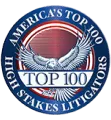Automobile accidents are resolved in two ways in the United States. A few states follow the no-fault method in which everyone involved typically files claims with their insurers, who then determine fault. However, most states use a tort, or at-fault system, in which claims are filed with the at-fault party or parties. In Cheyenne, Wyoming, and other parts of the Cowboy State, you and your car accident lawyer will need to prove who is at fault before filing a claim.
Beyond financial responsibility for any property damages and personal injury, the at-fault party may also have their license suspended, revoked, or their driving privileges restricted. Almost certainly, they will find themselves paying significantly more for automobile insurance for the foreseeable future. Consequently, you’ll want to prove someone else was to blame if you are involved in a collision. Thankfully, there are several things you and your attorneys can do to prove you are not at fault.
What Can You Do at the Scene to Prove You Were Not at Fault?
Since it is highly unlikely that your lawyer will be with you when you experience an automobile accident, you will initially be on your own. It should go without saying that the first steps to take following a collision are to ascertain the extent of any injuries to all parties involved and summon the necessary services, including EMTs and the police.
When those tasks are complete, you should call your insurer and attorneys to inform them of the situation. There are several things you can do or avoid doing at the scene of an accident to prevent yourself from being held responsible. They include the following.
1. Do Not Admit Fault
Automobile accidents are never pleasant. Not only are they frightening in the moment, but the immediate aftermath is also an unexpected, unwelcome interruption of people’s daily lives. As a result, tempers will be high. Accusations may be made.
Do your best to remain calm and defuse the tension, but, in doing so, do not apologize or assume responsibility for the circumstances. Any such remarks can be used against you in court. Just politely advise angry parties to wait for the police.
2. Do Call the Police
Even if the accident is minor, with minimal damage and no injuries, the authorities should be notified. Wyoming is one of the many states where this is required by law. The 911 operator will determine whether or not to dispatch anyone to the scene.
If law enforcement is dispatched, contact your attorneys before they arrive and listen to their advice on what to say when questioned. They will tell you to answer any questions directly but provide no additional information.
3. Decide Collectively Whether to Move Vehicles to the Shoulder
If the accident is minor and no one appears seriously injured, the safest option is to move any vehicles involved to the shoulder of the road, where everyone can safely exchange information and/or wait for the authorities.
When vehicles are too badly damaged to move without causing further harm, or someone complains of severe injury, do not move them. If available, place reflective hazard markers in the roadway behind the collision, then wait on the shoulder for law enforcement.
4. Gather All the Information You Can
Whether or not authorities respond, exchange information with all parties involved and any cooperative witnesses. Use your cell phone to photograph everyone, as well as the condition of every vehicle (including yours), any damaged property, road debris, obstructions, or tire marks left on the road.
In addition, note the presence of any traffic or security cameras that may have captured the accident. If an officer or deputy arrives, obtain their name, badge number, and the case number of their report.
5. Verify Insurance Coverage
Confirm the information given to you is consistent. For instance, if the name on an insurance card differs from that on the corresponding license, it’s advisable to call the insurer to confirm the driver is covered.
Inconsistencies may be as simple as a policy covering more than one driver or a case of maiden and married names but always check. Moreover, when calling the other party’s insurer, only confirm the information. Don’t impart any details of the accident.
What Can You and Your Car Accident Lawyer Do After the Fact to Determine Fault?
1. Write an Account of the Accident
When the accident is cleared and everyone has gone on their way, take some time to carefully reflect on the incident. Write down the details so that you can refresh your memory if summoned to court or deposed by other insurers. Specifically, note the date, time, and location of the accident, your speed, direction of travel, and position in the road, as well as your actions when the collision occurred and those of the other drivers involved.
2. If the Authorities Don’t Come to You, Go to Them
If the police, sheriff’s department, or highway patrol decline to respond to your call, you will still need a case report filed for the incident. Once you have gathered all available information on the accident, go to the nearest police station or sheriff’s office. Give them the particulars for every driver and vehicle involved. Answer any questions they have on the accident without volunteering additional information. Before leaving, request the case number and share it with your attorney.
3. Monitor Your Health in the Days Following Your Accident
Not all injuries from collisions are immediately apparent. Some aches and pains take a day or two to manifest. If you experience any pain shortly after an accident, visit your physician so that it can be diagnosed and documented. Be sure to notify your attorney of any such developments. While any late-occurring symptoms don’t determine who was at fault for your accident, they do help determine the extent of any damages and possible compensation.
4. Answer Any Questions Posed by Your Cheyenne, Wyoming Attorney and Follow Their Instructions
While it’s important for you to be proactive at the scene of an accident and immediately afterward, it is then time for your car accident lawyer to take the lead. As experts in Wyoming traffic law, they know which statutes apply to your case, how to see that you are fairly compensated, or protect you from parties looking to shift the blame onto your shoulders. However, they can only achieve those aims with your trust and cooperation.
5. Rely on Your Attorney to Interpret the Evidence to Determine Liability
Competent and experienced car accident lawyers understand which factors can aid or hinder your case. They recognize how the location of the damage on each vehicle, tire marks, and other evidence may indicate fault. They can review eye-witness accounts for inconsistencies and expose errors in judgment made by law enforcement and insurance investigators. They know how to help expedite your claim and protect you from the claims of other drivers.
With more than twenty years of experience proving liability in personal injury and defective product cases in Wyoming, Idaho, Kansas Colorado, and California, Jason E Ochs has the knowledge, as well as the professional and personal experience to help you recover the damages and compensation to which you are entitled. Contact Ochs Law Firm now to begin your journey to recovery.







